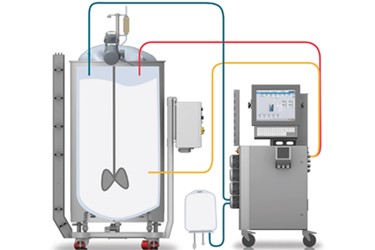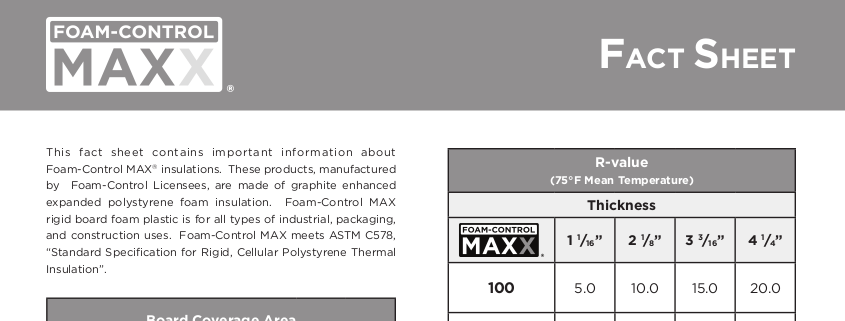Making The Most Of Item Quality Via Effective Foam Control Techniques
Making The Most Of Item Quality Via Effective Foam Control Techniques
Blog Article
Comprehending the Relevance of Foam Control in Industrial Processes
In commercial procedures, foam control is often a neglected yet crucial facet that directly affects functional efficiency and product stability. The presence of too much foam can result in significant difficulties, consisting of disrupted blending and reduced reaction kinetics, which may ultimately impact product quality throughout various sectors such as pharmaceuticals and food production. Understanding the subtleties of foam administration, including efficient methods and possible improvements, increases critical inquiries about finest methods and future advancements. What are the effects for markets making every effort for boosted performance and conformity?

The Duty of Foam in Industry
Foam plays a significant duty in various commercial procedures, affecting both performance and product top quality. In sectors such as food and drink, pharmaceuticals, and petrochemicals, foam can serve both harmful and advantageous purposes. For example, in the food market, foam stabilization is important during procedures like whipping cream or creating beer, where the quality of foam directly affects customer assumption and item attributes.
In chemical manufacturing, foam can work as a barrier, preventing the correct blending of reagents, which can result in suboptimal yields and insufficient reactions. Conversely, in processes like flotation in mineral handling, foam is used to divide important minerals from waste product, enhancing recuperation prices.
Furthermore, in wastewater treatment, foam development can suggest the presence of raw material, working as a crucial criterion for process surveillance. The capacity to regulate foam is essential for preserving process security and maximizing functional costs. Recognizing the duty of foam in industrial applications allows engineers and operators to execute efficient foam monitoring techniques, ensuring that foam adds favorably to general process performance while decreasing its possible disadvantages.
Usual Challenges of Foam Formation
Lots of markets encounter significant obstacles as a result of the unintended development of foam throughout various processes. Foam can interrupt the effectiveness of operations, causing enhanced downtime and greater functional costs. In sectors such as drugs, food and beverage, and wastewater therapy, foam can prevent blending, reduce product return, and make complex splitting up processes.
Moreover, foam can create safety threats by blocking clear presence, which is essential in settings where accurate measurements and tracking are needed. The existence of foam can likewise bring about equipment damage, as too much stress buildup may take place in tanks and activators.
In addition, the demand for frequent intervention to manage foam can divert resources and labor, ultimately impacting performance. Ecological policies position an additional difficulty, as too much foam can lead to non-compliance problems in effluent discharge, necessitating extra therapy procedures.
Impact on Item Quality

In chemical manufacturing, foam can prevent response kinetics by limiting gas-liquid contact, resulting in incomplete reactions and reduced yields. This not just influences the performance of production but can likewise result in subpar final result that do not meet regulative standards or customer specs.
Additionally, in drugs, foam formation throughout solution processes can introduce air bubbles into delicate compounds, jeopardizing medicine efficacy and security. Additionally, foam can cause functional issues such as overflow and devices breakdowns, increasing downtime and upkeep prices, additionally impacting item top quality and consistency.
Approaches for Effective Foam Control
Resolving the difficulties positioned by foam is crucial for keeping item high quality throughout various commercial industries. Efficient foam control strategies are essential to mitigate the damaging impacts of foam formation, which can interrupt procedures and concession item honesty.
Among the primary approaches entails the selection and application of appropriate antifoaming agents. These representatives are developed to decrease surface tension and inhibit bubble formation, and their effectiveness can vary based upon the details process conditions. Routine monitoring of foam levels is crucial to make certain prompt treatment, permitting operators to use antifoaming representatives before foam ends up being a significant issue.
In addition, optimizing procedure specifications such as temperature and agitation can play an essential duty in foam monitoring. Lowering anxiety intensity or adjusting feed prices can decrease foam generation. Applying mechanical foam control devices, such as foam breakers or defoamers, can this hyperlink also provide effective solutions for high-foaming applications.
Training workers on foam management strategies and the importance of keeping optimum operating conditions better boosts foam control initiatives. Foam Control. By using a combination of these approaches, sectors can effectively take care of foam, guaranteeing operational efficiency and keeping the quality of their products
Future Trends in Foam Monitoring
Exactly how will improvements in innovation form the future of foam management in industrial procedures? The combination of expert system (AI) and equipment discovering will certainly change foam control techniques, allowing real-time monitoring and flexible responses to foam formation. These modern technologies can evaluate historic information and functional specifications to predict foam habits, permitting preemptive steps that enhance procedure efficiency.
Moreover, the advancement of sophisticated foam control representatives, consisting of bio-based and environmentally pleasant options, is gaining traction. These developments not only alleviate foam yet additionally align with sustainability goals, decreasing the environmental footprint of industrial operations.
Automation will also play an essential duty, as automated foam control systems can enhance the dosage of defoamers based upon real-time dimensions, lessening waste and boosting efficiency.
Moreover, the fostering of IoT (Net of Points) tools will certainly facilitate seamless read this article interaction between equipment and foam control systems, guaranteeing an alternative method to foam management. (Foam Control)
Verdict
Finally, efficient foam control is necessary for enhancing industrial processes throughout various markets. The challenges postured by foam development can considerably impact product high quality and operational efficiency. Executing strategic foam monitoring strategies, including the use of antifoaming representatives and procedure optimization, alleviates these weblink challenges. As markets proceed to progress, recurring innovations in foam control technologies will certainly further improve productivity and sustainability, ensuring compliance with environmental policies while maintaining the stability of items.
In the food market, foam stablizing is essential throughout procedures like whipping lotion or producing beer, where the quality of foam straight influences customer assumption and item features.
Recognizing the duty of foam in industrial applications permits operators and designers to execute efficient foam administration approaches, making certain that foam contributes favorably to total procedure performance while reducing its prospective disadvantages.
Normal monitoring of foam degrees is crucial to make sure timely intervention, enabling operators to use antifoaming agents prior to foam becomes a significant problem.
Implementing mechanical foam control tools, such as foam breakers or defoamers, can likewise offer reliable services for high-foaming applications.
The combination of synthetic intelligence (AI) and device knowing will revolutionize foam control approaches, allowing real-time monitoring and adaptive feedbacks to foam development.
Report this page